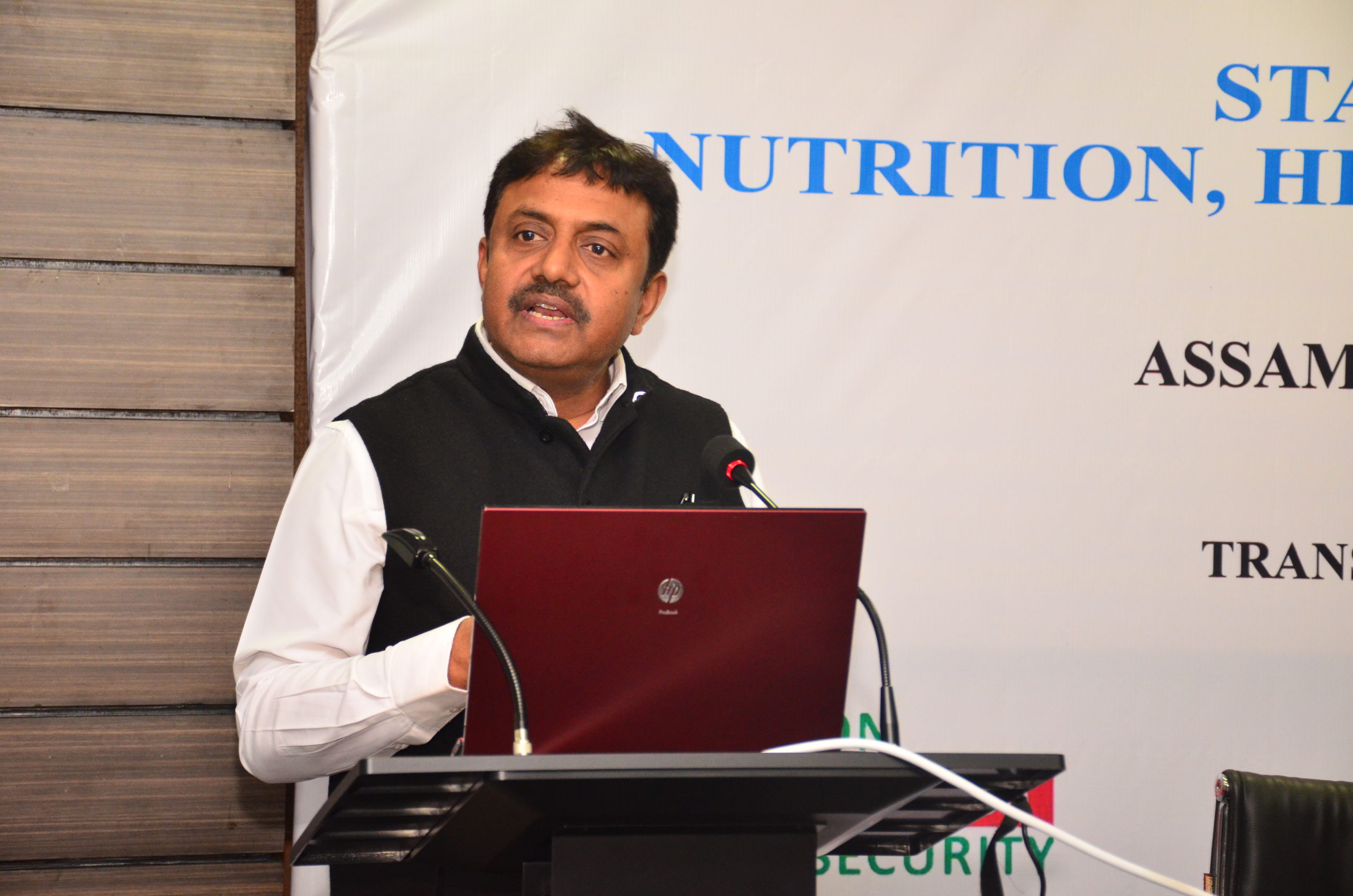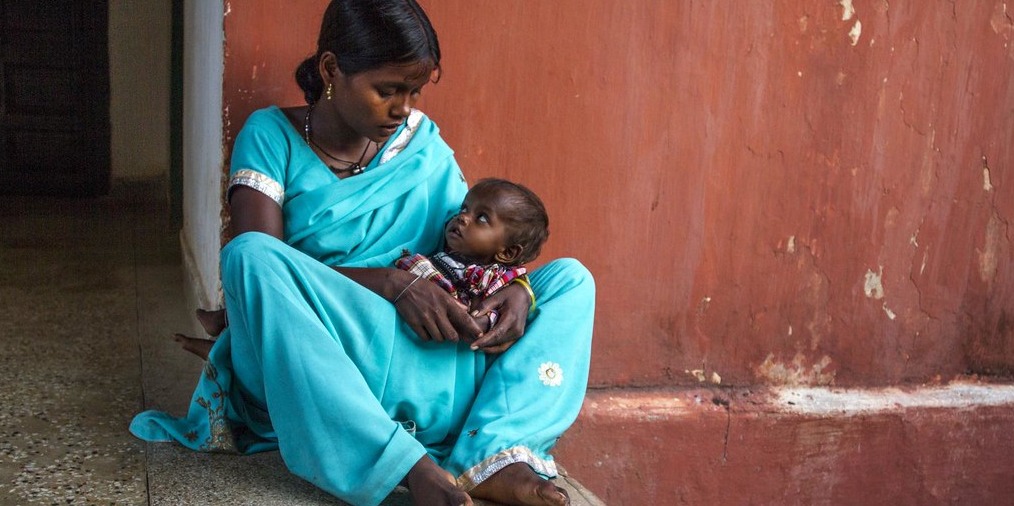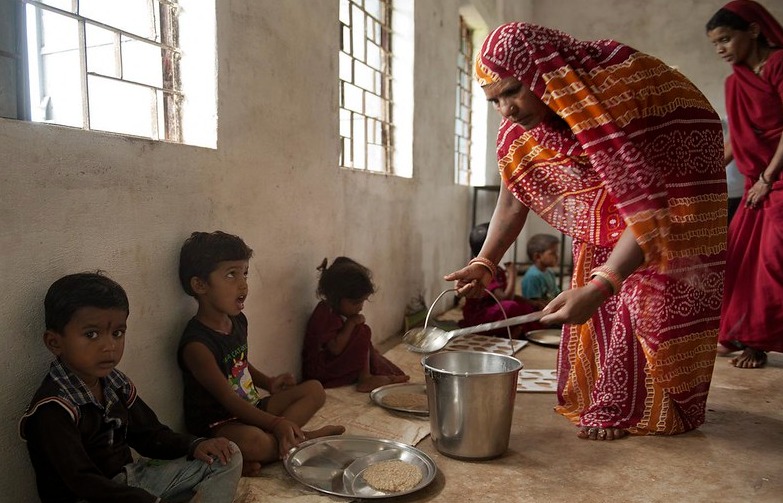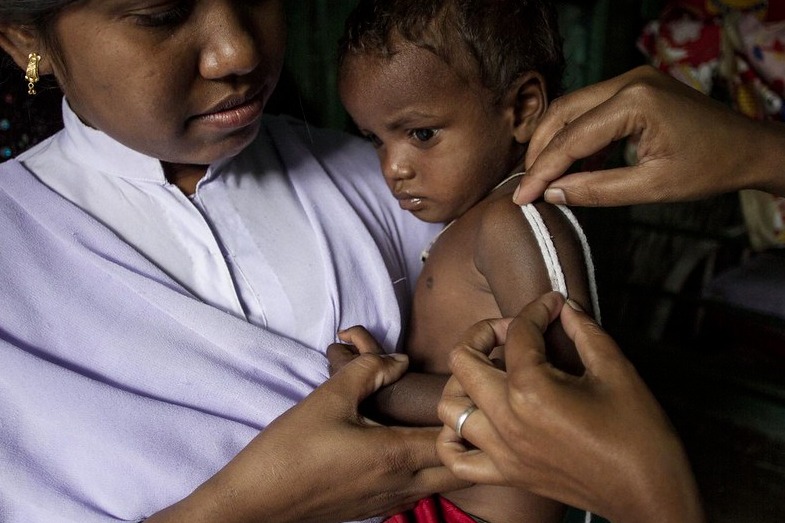What is the cost of childhood wasting and severe acute malnutrition in India?
Childhood wasting is a silent nutritional emergency in India as it led to an average loss of Rs 60 million every day from the years 2006 to 2018. Community-based care for management of wasting is highly recommended.


A nurse giving water sugar mixture to a kid at Nutritional Rehabilitation Centre in Jharkhand. Photo: Unicef India
We often read and talk about malnutrition and undernutrition in children. But it is rarely quantified. A recent study on ‘The Severity of Wasting and Severe Wasting’ among children in India, conducted by The Coalition for Food and Nutrition Security (CFNS), a non-profit that works in the field of food and nutrition, has possibly for the first time tried to put a cost on malnutrition.
The study has estimated there was an average loss of Rs 60 million every day from the years 2006 to 2018 due to untreated childhood wasting in India. Wasting is defined as low weight-for-height.
Besides this, there has been an annual economic loss of around 4.7 per cent of the gross domestic product (GDP) due to childhood wasting.
Multiple forms of malnutrition keep people from reaching their full potential and reduce the nation’s economic growth. Malnourished children underperform in school, limiting their future job opportunities.

Malnourished adults are less able to work, contribute to local economies, and provide care for their families.
Also Read: Women ‘Poshan Champions’ tackle malnutrition while puncturing patriarchy
Malnourished mothers are more likely to have underweight children, who will, in turn, have a higher risk of physical and cognitive impairment. This perpetuates a cycle of poverty and economic stagnation.
Such enormous costs result from economic growth foregone and lost investments in human capital associated with preventable child deaths, 45 per cent of which can be ascribed to poor nutrition, as well as premature adult mortality linked to diet-related non-communicable diseases.
Assessing the cost of wasting
Childhood wasting is a silent nutritional emergency in the country calling for immediate attention.
However, the cost of wasting has been difficult to assess due to its transient nature as it does not last long, and children usually recover or die. Secondly, the condition overlaps with other diseases and is, therefore, difficult to define.
Also Read: Rising hunger stares rural India in the face as the second wave of COVID invades villages
The recent study of The Coalition for Food and Nutrition Security attempts to answer some of the oft-asked questions about childhood wasting. Its aim was to highlight the cost of childhood wasting if additional measures were not taken to reduce under-five wasting prevalence in the country.
The study has analysed the history of child wasting in the country, using the current scenario (2005-18) to estimate the current economic and social consequences. It also makes recommendations for policy makers for improving the status of childhood wasting in India.

Causes and impact of wasting among children
Wasting, or low weight for height, is a strong predictor of mortality among children under five. Wasting/thinness indicates in most cases a recent and severe process of weight loss, and results from a combination of repeated or prolonged episodes of infections and acute significant food shortage / inadequate or poor-quality diet intake.
The underlying causes include poor access to timely and quality health care, suboptimal breastfeeding, inadequate quantity or quality of complementary food, household food insecurity and lack of safe water, appropriate hygiene and sanitation facilities.
Children with low birth weight or of small gestational age are also at a higher risk of wasting. Wasted children are at higher risk of mortality and repeated infections. Repeated and prolonged episodes of wasting results in growth deficits and subsequent stunting.
Also Read: Fighting tuberculosis with nutri-gardens

Child nutrition and the pandemic
India is not just fighting a COVID 19 outbreak, but is also battling existing undernutrition. The spread of COVID-19 has impacted the health, nutrition, livelihoods and wellbeing of India’s most vulnerable populations and will have a lasting effect on people.
The impact of malnutrition has increased, especially among children in an environment in which health and nutrition services were reduced or destroyed, where the caring structures had broken down within society, and trauma was prevalent.
We can also understand that a possible impact was reduction in the number of meals per day, leading to inadequate dietary intake and increased incidence of diseases.
Also Read: Waste and Want: 50 kg of food a person wasted every year, while 14% Indians malnourished
The COVID-19 outbreak last year and the ensuing lockdown led to large-scale loss of employment and increase in food insecurity. It is expected that child nutrition was also adversely affected.
Globally, childhood wasting is expected to rise significantly by at least 14.3 per cent, with a large proportion of such cases coming from South Asia.
Given that the duration of the crisis and its impact on food, health and social protection systems is yet unknown, it is difficult to assess the exact extent of its impact on nutritional indicators.
It is also feared that under-five deaths are going to see a surge — many may be linked to an underlying condition of wasting. It, therefore, becomes all the more imperative to address childhood wasting as a priority area.
Also Read: Excluded by marriage: ‘Over a million women in Odisha left out of PDS’

Effect of community-based care
Community-based care is a methodology for treating acute malnutrition in young children. Most malnourished children can be rehabilitated at the community level / home — only a very small number need a health facility.
Early identification of children with wasting will prevent children developing medical complications. India currently has a network of 1,151 Nutrition Rehabilitation Centres for treatment of children with severe acute malnutrition (SAM). However, neither is it feasible to provide all SAM children with facility-based treatment — both from the societal or provider’s perspective — nor do all SAM children need facility-based care.
The World Health Organization (WHO) has laid down guidelines for community-based management of SAM children without medical complications that can improve access and treatment coverage as well as reduce the treatment cost.
Treatment of SAM is seen as one of the most cost-effective interventions to reduce the burden of malnutrition globally. Policy makers need to review the provision of SAM management that enables early detection and management and reduces the cost of wasting in India.
Immediate concerted action is required for both prevention and treatment of wasting among children below five years not only for economic reasons, but also to uphold the rights of children to survive and thrive.
To ensure higher access to treatment, larger coverage and sustainability, a community-based care for management of wasting is highly recommended.
Dr Sujeet Ranjan is Executive Director of The Coalition for Food and Nutrition Security and has been associated with the social development sector for over two decades. Views are personal.

